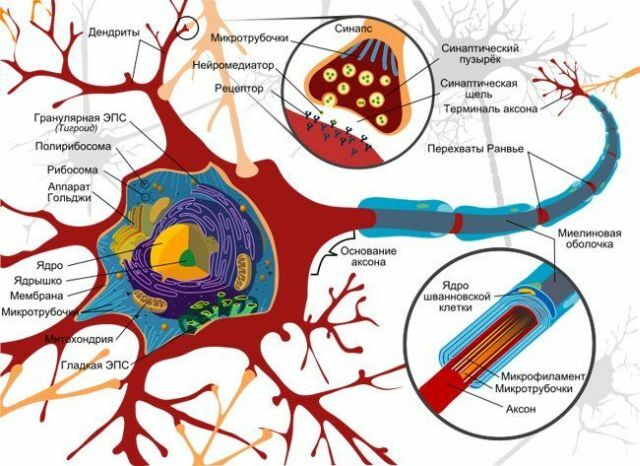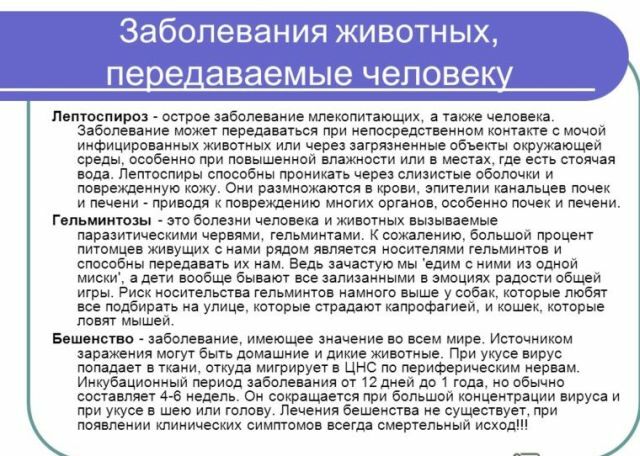 Now this realm of "living crystals" is called simply: viruses, but it was not always so. In 1891-1892, the first Russian botanist, DI Ivanovskii, who introduced them for the first time, introduced a different name for them: filtering viruses.
Now this realm of "living crystals" is called simply: viruses, but it was not always so. In 1891-1892, the first Russian botanist, DI Ivanovskii, who introduced them for the first time, introduced a different name for them: filtering viruses.
For their penetrating ability seemed to this person just supernatural. Yes, so it is, because even overcoming the blood-brain barrier for them presents no difficulty.
And pass the blood-brain barrier - the gate that separates the nerve tissue from the arterial bed( letting only substances into the brain to feed it and locked tightly for all dangerous and suspicious) is not easy.
Each pathogen for this has its own method. Since you can not bribe a rustic but honest guard of the gate, deception and poison are used.
Contents
- Lyrical digression
- Normal heroes always bypass
- What moment is suitable
- All encephalitis is for one person. ..
- . .. but herpes is special
- Diagnosis
- Again - blood-brain barrier
- Forecast and consequences
- Prevent infection - is it real?
Lyrical digression of
Listeria, for example, using lipopolysaccharides and toxins, make gaps between the endotheliocytes permeable to leukocytes, and when

Listeria under the microscope
they trigger the onset of inflammation, seep into the brain themselves.
In everyday medieval paints it looks like this. Having risen under the city wall and having sat down to supper, the listeria pass guard to the gate through a narrow( not to climb through) loophole treat - a couple of bottles of wine: warm up, guys. Then another couple, and more.
And, finally, the "guys", who have accumulated to the state of forgiveness and all the passage, unlock the gate to a group of leukocytes that have presented a forged pass, composed by all the same listeria. Leukocytes destroy the guards and organize massacres in the city, but the listeria passes unhindered through the gates.
Pneumococci secrete hemolysins, creating pores in the endothelium, through which they penetrate inside. Each overcomes the blood-brain barrier in its own way.
How does the herpes simplex virus, for certain is not yet known, but it does it. Hence, it is not as simple as the name implies.
Normal heroes always bypass
The only thing that has been established is that this relative of cytomegaloviruses, varicella viruses and shingles penetrates the brain( into the middle cranial fossa) from the nasal cavity along the axons of the olfactory neurons, causing primary herpes in the form of encephalitis in young peopleand young children.
At the same time, adults affected by herpetic encephalitis either had herpes in the past or were carriers of type 1 virus.

Here it is worth explaining that the antigenic structure of herpes simplex viruses is of two types, from which their narrow specialization follows. Cases of generalized infection of newborns and genital herpes are the "merit" of the second type of virus, while the defeat of the respiratory system is carried out by type 1 viruses.
Finding the same strain in both the nasopharynx and the brain tissue is explained differently by different researchers.
The first ones are sure that the virus, having passed the resting stage after introduction into neurons of the trigeminal nerve or vegetative ganglia, reactivates, penetrates into the brain along the nerves of the middle cranial fossa.
 Others argue: the virus was already in the brain tissue in the inactive state, where it was reactivated when the appropriate conditions appeared. In defense of this version, the argument is made that oligonucleotide probes often detect the virus DNA in the brain of an adult whose cause of death was not herpes.
Others argue: the virus was already in the brain tissue in the inactive state, where it was reactivated when the appropriate conditions appeared. In defense of this version, the argument is made that oligonucleotide probes often detect the virus DNA in the brain of an adult whose cause of death was not herpes.
The infection has either a contact or airborne transmission mechanism and sporadic morbidity( with increasing frequency in the spring), amounting to 11.5% of all cases of acute encephalitis.
Be that as it may, the virus enters the neurons of the brain and either causes a lightning attack, or "sleeps" and waits for the right moment.
Which moment is the appropriate
The most favorable conditions for a lightning-fast stroke of the herpes virus through the brain can be any weakening of the body's health( especially - immune defense):
- acute or exacerbation of a chronic disease;
- appearance of endocrine changes, including those occurring in puberty and menopause;
- considerable stress, mental shock;
- depressing life circumstances, "means" of which are alcohol and drugs;
- is tense( "on wear") activity, both mental and sports( or other physical work for the body).
Does the development of the disease seem to lack one link-the source of infection? That's just it - enough, because herpes simplex virus infected 80% of the world's population!
All encephalitis - one person. ..
The majority of viral encephalitis for mild disease in both children and adults is manifested:
- with an increase in body temperature;
- headache;
- with nausea;
- drowsiness;
- sensitivity to light.
Causing severe onset:
- epileptic seizures;
- stiffness of the occipital muscles;
- paresis and paralysis.
And in especially severe cases - to the violation of consciousness and coma, accompanied by
- leukocytosis;
- increase in the number of lymphocytes in the CSF.
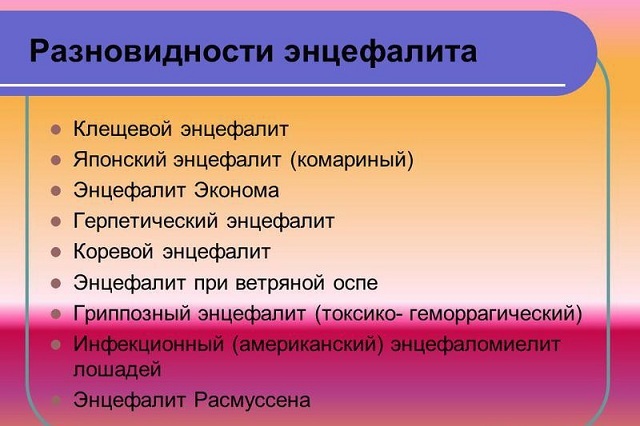
. .. but herpes is a special
This infectious-toxic brain damage most often occurs with the involvement of the temporal and frontal lobes in the process, where necrotic foci are formed with hemorrhagic impregnation of tissues.
The prevalence of these or other symptoms depends on the localization of the affected area, its vastness and the significance of the changes that occurred in it.
Isolate the classic for herpetic encephalitis triad of symptoms:
- Fever .Rapid temperature rise up to 39 and more ° C, not subject to the action of antipyretics.
- Convulsive syndrome .Seizures of Jacksonian type, both involving the whole body, and certain parts of it.
- Consciousness disorders from the time-consuming oblivion to the deepest coma, from which in 90% of cases the patient does not go out - it ends with a lethal outcome.
In addition to the classic, occurring in all patients without exception, there are also symptoms that are especially individual, such as:
- disorder of the function of the oculomotor nerve with the development of strabismus or "double vision" in the eyes;
- hallucinations of a short-term nature( which may be signs of concurrent CNS disease, but need urgent relief regardless of the cause of its occurrence);
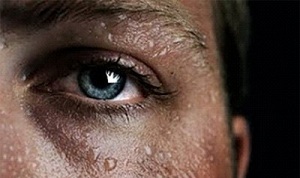
- amnesia of a short-term nature;
- mental agitation ;
- pouring sweat ;
- vestibulopathy ( imbalance in walking);
- monoparesis ( indicating a predominant lesion of the temporal lobe);
- speech disorders ( aphasia).
Herpetic lesion of the brain( except for the development of typical necrosis in it) can have the character of pseudotumorous and stem process or encephalomyelitis.
All about herpetic encephalitis affecting children:
Diagnosis of
Laboratory-diagnostic methods and instrumental studies help confirm herpes encephalitis:
- liquor ( excess protein content after the first 3-5 days of the disease, lymphocytic pleocytosis and DNA detection of the virus-causative agent);
- blood ( high rates of ESR, leukocytosis with a stab-shift, lymphopenia);
- MRI of the brain ;
- biopsy of the .
To help in diagnosis, there is also a clear link between the development of encephalitis and the previous( short-term) respiratory infection.
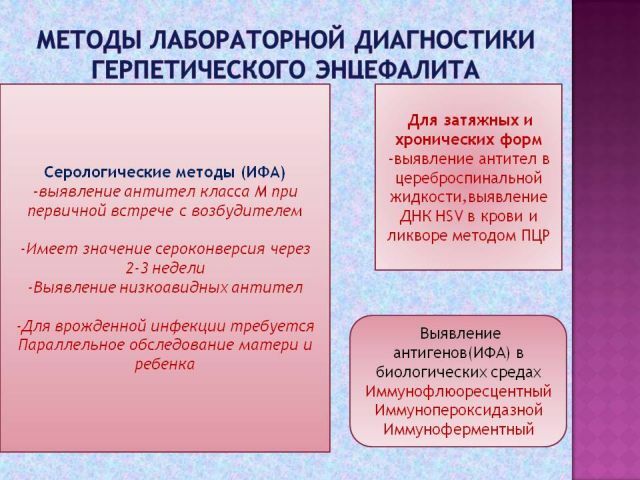
Again - the blood-brain barrier
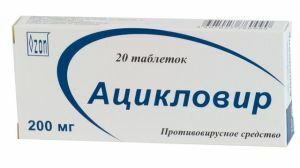 Treatment of herpetic encephalitis is a big problem precisely because of the existence of the blood-brain barrier, which serves as an obstacle to the admission of certain drugs into the brain.
Treatment of herpetic encephalitis is a big problem precisely because of the existence of the blood-brain barrier, which serves as an obstacle to the admission of certain drugs into the brain.
But at the moment, antibiotics have been developed that can overcome it, acting in conjunction with the main component of treatment - the antiviral drug Acyclovir administered intravenously in high doses( in the case of coma up to 15 mg / kg every 8 hours).
In the treatment of such a serious disease it is appropriate to use other groups of drugs:
- immunomodulators( Interferon);
- neuroprotectors;
- corticosteroids;
- antipyretics;
- anticonvulsant drugs.
Treatment is performed exclusively in hospital settings( in the intensive care unit due to the possibility of respiratory distress and swallowing) and takes 7 to 12 days.
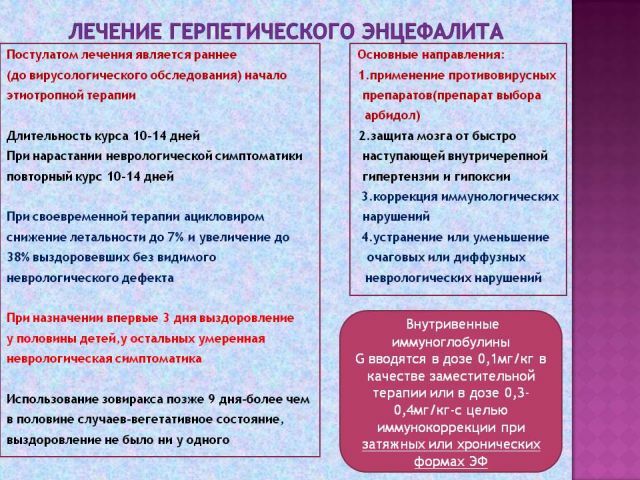
Prognosis and consequences of
Consequences depend on the severity of the disease, the extent of the brain damage and the extent to which its vital centers are involved in the process, as well as the speed at which treatment begins.
At the onset of a fast enough up to 80% of cases fall into a coma, so treatment begins without waiting for the results of laboratory tests confirming the diagnosis.
Despite a drop in the percentage of mortality from 70-75 to 20-25% with the onset of the use of modern antiherpetic drugs, the consequences of the transferred herpetic encephalitis are rarely invisible.
Complete restoration of all body functions is noted only in 1-2% of cases, in others the prognosis for life is unfavorable because of the 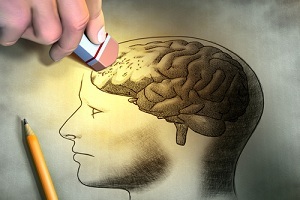 of persistent residual phenomena.
of persistent residual phenomena.
This can be as convulsive seizures and persistent intellectual disturbances( dementia with the loss of previously acquired skills and knowledge and the inability to form new ones) in adults, as well as hydrocephalus or decortication of the brain that has developed in infants.
Prevent infestation - is it real?
Measures aimed at preventing herpes infection include the development of personal skills( including sex education from early childhood) and public hygiene in all areas of human life.
The effectiveness of the developed killed antiherpetic vaccine( with the aim of preventing recurrence of infection) has not yet been studied sufficiently.
Therefore, the maintenance of immunity at a high level and, if necessary, the taking of drugs that raise it is an integral article preventing the infection of herpetic infection.

